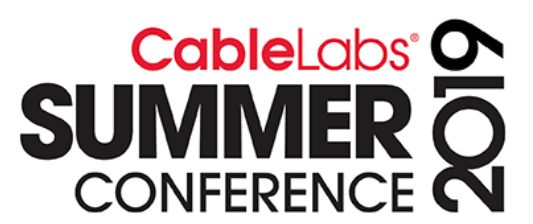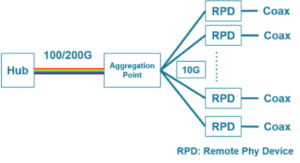
Is there a better place to spend the first week in August than nestled in the beautiful Rocky Mountains in Colorado? Acacia will be heading to the CableLabs Summer 2019 Conference in Keystone, Colorado from August 5-6th. This year’s agenda is jam-packed with innovation showcases, powerful keynotes, expert panels, fireside chats and plenty of networking opportunities for professionals from all corners of the cable industry. According to CableLabs, this is the one place where the cable industry can go to get inspired—or inspire others—to build the future we can all be proud of faster, together.

We are excited to have Tom Williams, Acacia’s Vice President of Marketing, take the main stage on Day 1 of the show in a panel titled “Coherent Optics in the Access: Are we there yet?” Tom will be joined by executives from CableLabs and Comcast to discuss the current state of coherent optics in the industry and how they can be leveraged by cable companies to achieve faster and more scalable networks. Here’s a link to his panel, which will be at 11 am.
Coherent Technology for Cable Access
One trend that we expect to be widely discussed at this year’s Cable Labs Summer Conference is the belief that access networks are an emerging opportunity for coherent interconnections. The cable industry has been driving standardization of coherent for access aggregation in this segment.
As the hybrid fiber-coax (HFC) networks evolve toward remote PHY architectures, fiber is being deployed deeper in the network, resulting in increased available bandwidth to residential end-user customers, while eliminating bottlenecks in the HFC network. 10G optical interfaces are pushed closer to the end users resulting in aggregation points in the network where 10-20 remote PHY devices come together.

Remote PHY network
Acacia believes that coherent can be an effective way to transport these aggregated signals back to the hub. In some cases, it may only be necessary to transport a single coherent wavelength back to the hub, but since coherent is inherently a DWDM technology, this approach could provide the capability to expand capacity by up to two orders of magnitude in the future.
As the standards organization of the cable industry, we applaud CableLabs for their ongoing efforts in this area. In 2017, CableLabs kicked off a project to define coherent standards for cable access aggregation applications. In July 2018, CableLabs publicly unveiled for the first time, the P2P Coherent Optics Architecture Specification and the P2P Coherent Optics Physical Layer v1.0 Specification outlined below. These specifications are part of the Point-to-Point Coherent Optics family of specifications developed by CableLabs, which was further enhanced in March 2019, with the P2P Coherent Optics Physical Layer v2.0 Specification, and in June 2019, with the Coherent Optics Termination Device OSSI Specification. These specifications enable the development of interoperable transceivers using coherent optical technology over point-to-point links. This specification was developed by CableLabs for the benefit of the cable industry and includes contributions by operators and manufacturers from North and South America, Europe, Asia, and other regions.
- P2P Coherent Optics Architecture Specification – This specification provides background information regarding coherent optics technology, and how it can be used in cable access networks. More specifically, it was designed to accomplish the following:
- Identify use cases of where operators can use P2P Coherent Optics in the access network;
- Identify and document the common network requirements for the different use cases;
- Identify and document through use cases the Hosts that could incorporate P2P; Coherent Optics components or modules
- Identify and document where P2P Coherent Optics benefits each use case; and Communicate the architectural foundation on which the other P2P Coherent Optics specification depend.
- P2P Coherent Optics Physical Layer v1.0 Specification – This specification defines the optical physical layer requirements for coherent optical transceivers operating at 100 gigabits per second (Gbps). It was designed and optimized to support fiber links up to approximately 40 km. It will also support links of 80 km, and can support links up to 120 km in some circumstances.
- P2P Coherent Optics Physical Layer 2.0 Specification – This specification defines the optical physical layer requirements for coherent optical transceivers operating at 200 gigabits per second (Gbps). It was designed and optimized to support fiber links up to approximately 40 km. It will also support links of 80 km, and can support links up to 120 km in some circumstances.
- Coherent Optics Termination Device OSSI Specification – This specification defines the Operations Support System Interface (OSSI) requirements for the Coherent Optics Termination Device (CTD), which includes a transceiver that terminates one end of a P2P coherent optics link. The scope includes requirements for managing the Point-to-Point Coherent Optics Transceiver in the CTD independent of the pluggable form factors in which the transceiver may be deployed (which defines the mechanism by which information is shared between the Point-to-Point Coherent Optics Transceiver and the CTD).
Acacia has been proud to participate in this project, along with many other optical networking vendors and several large MSOs.
Come See Us
If you are attending the CableLabs Summer 2019 Conference, we’d love to catch up with you while we’re there. Follow this link to set up a meeting and we’ll get back in touch ASAP. We hope to see you in Colorado!
